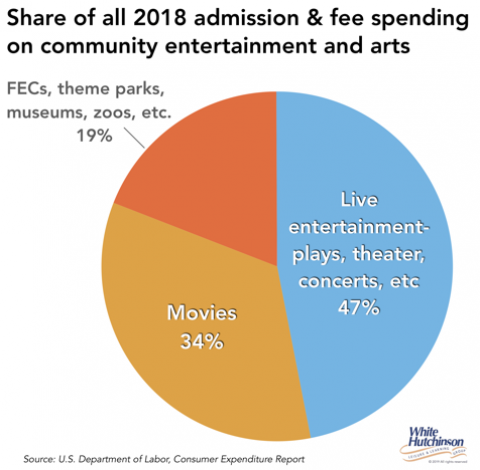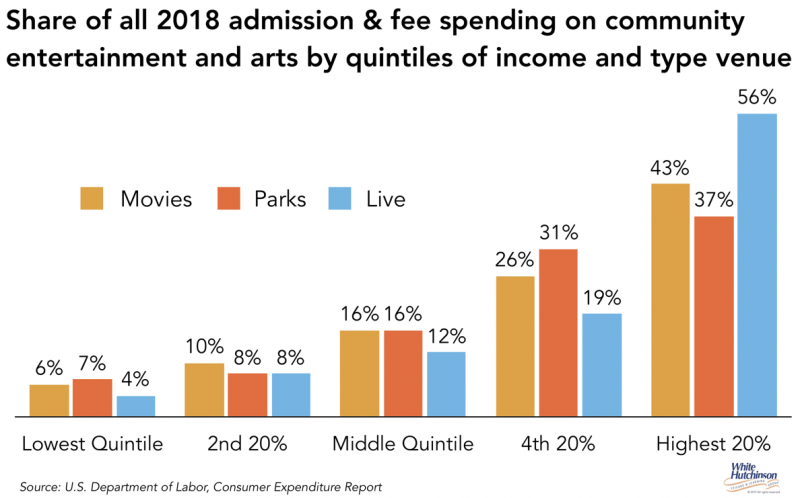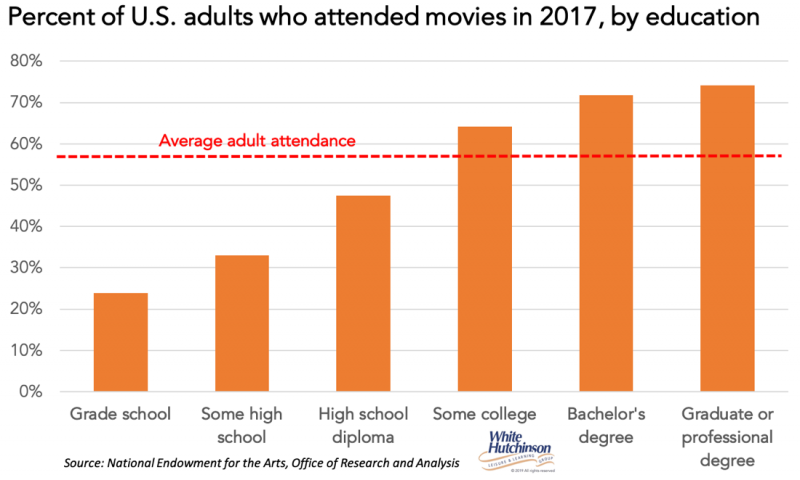
Vol. XIX, No. 8, September 2019
- Editor's corner
- Changes to community-based entertainment & arts spending
- Our CEO's presentations
- The upended CLV business model: it's no longer about the entertainment attractions
- Best designed restrooms for 2019
- Family time has taken a new meaning
- VR the next big thing, but not where you think
- The scoop on live events and festivals
Changes to community-based entertainment & arts spending
2018 saw a four percent increase in household spending on fees and admissions for community* out-of-home (OOH) entertainment and arts. The vast majority of the increase, 94%, came from households with the top 40% of incomes ($70,000+). Even with the increase, average household spending on community entertainment and arts was only two percent higher than pre-recession spending in 2007 (inflation-adjusted).

Overall, admission and fee spending break down as:
- 34% - Movies
- 19% - Entertainment centers, theme parks, museums, zoos, etc.
- 47% - Live entertainment - plays, theater, concerts, etc.
Live entertainment captures almost one-half of all OOH entertainment spending. This is attributable to live entertainment being a one- or limited-time event. It is typically more expensive, but people are willing to pay a higher price for it due to its higher fidelity than other types of entertainment and its uniqueness.
There is a direct correlation between household income and spending on community entertainment and arts. The top 40% of households by income now account for 72% of all such spending. The top 20% by income ($107,000+) account for almost one-half of all spending (48%). The correlation holds true regardless of the type of entertainment, even for the least expensive type of out-of-home entertainment, going out to the movies.

A second data source from a National Endowment for the Arts national survey on participation in different types of OOH entertainment and arts shows that there is a correlation for movie attendance not only between socioeconomics and spending, but also with participation, in this case socioeconomics as measured by education.

What this means is that the higher income, higher educated consumer is the market to target for out-of-home entertainment and arts. To attract this market requires high quality experiences that not only include the entertainment, but also high-quality ambiance, hospitality service, and food and drink that meets their preferences and expectations.
* Community fees and admissions consists of spending at entertainment and art venues within 50 miles of home and not on an overnight visit.
Vol. XIX, No. 8, September 2019
- Editor's corner
- Changes to community-based entertainment & arts spending
- Our CEO's presentations
- The upended CLV business model: it's no longer about the entertainment attractions
- Best designed restrooms for 2019
- Family time has taken a new meaning
- VR the next big thing, but not where you think
- The scoop on live events and festivals


